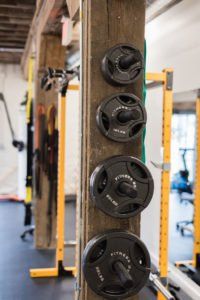Ankle Sprain: Is Status Quo Enough?
 Most of us have tweaked our ankle at some point or another. Typically we’re told it’s best to either stay off of it or brace it for a few weeks and it will heal. However, all too often there is an underlying process lurking deep down in the tissues that isn’t going to allow your ligament to heal fully, and leave you predisposed to chronic sprains.
Most of us have tweaked our ankle at some point or another. Typically we’re told it’s best to either stay off of it or brace it for a few weeks and it will heal. However, all too often there is an underlying process lurking deep down in the tissues that isn’t going to allow your ligament to heal fully, and leave you predisposed to chronic sprains.
Ankle sprains affect people young and old, in any population, and whether athletic or not. It may happen while playing – or cutting – during a sporting event; when walking on uneven ground or into a small hole in the yard; or you might miss-step off of a sidewalk. Sprains generally affect the outside of the ankle when the ankle rolls, making the anterior talofibular ligament (ATFL) the most commonly injured tendon – which attaches from your outside ankle bone to a bone in your foot.
Once an ankle sprain occurs, there is tissue damage. This can range from a few fibers tearing – causing minor discomfort for a day or two – to a full-blown tear. Unfortunately, with status quo treatments re-sprains are far too common.
We have sensors in all of the muscles, tendons, ligaments – and even in the joint capsules surrounding the joints. Sensors provide our brain with important information about stretch, muscle activation, and joint position. This information allows the brain to form an internal picture of how the joint is doing at that moment. When the initial injury occurs, these sensors get disrupted and stop working properly. When this happens, the brain is unable to create an accurate picture of how the joint is functioning. This altered picture causes the ankle to be less responsive to demands put onto it, preventing your brain to effectively stabilize the ankle. As a result, something simple you may have done thousands of times – like jumping and landing on a volleyball court – may be the cause re-injury. Minor re-sprains can also happen without you knowing. These small injuries usually occur with simple activities like walking in grass. Unfortunately, these minor injuries will continue the cycle of chronic ankle sprains and may delay healing.
So, bracing and rest may not always be the best treatment for ankle sprains.
Of course they have their place with more severe sprains. However, in the case of minor to moderate sprains, braces can actually decrease proprioception and strength, making the ankle more prone to even more sprains! Physical therapy – to build up strength – is often the best treatment for a patient with this condition.
Physical therapy in ankle sprains will help guide you through progressive exercises that will improve ankle muscle strength as well as retrain the joint sensors to perform their job properly. Treatments generally consist of balance and proprioceptive drills on a variety of surfaces and with targeted strengthening exercises. Treatments should be tuned to specific tasks that will be encountered often whether in sports (cutting) or in daily life (walking on uneven surfaces). This is the best route to train the ankle to react to different challenges and prevent chronic sprains.
Bryan Esherick PT, DPT









